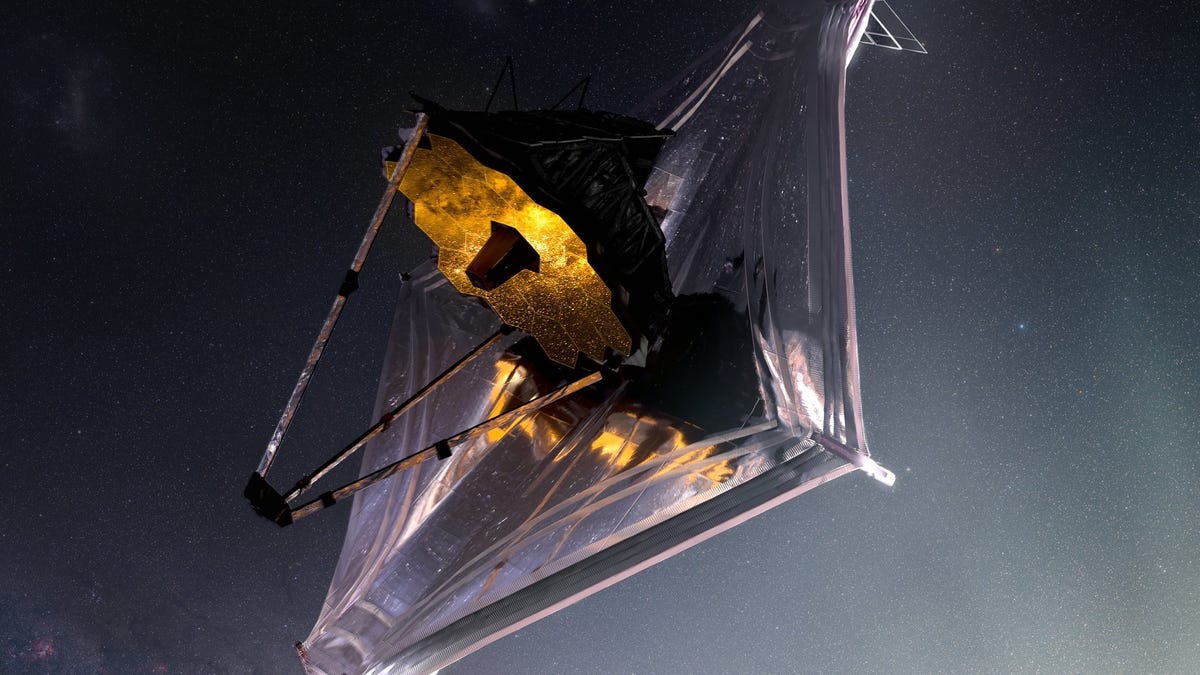NASA Investigates James Webb Space Telescope Instrument Problem
One instrument has a hiccup, but the rest of the telescope is working properly.

One of the James Webb Space Telescope's instruments has run into a technical glitch. The next-gen telescope has been running at a fast and furious pace sending back stunning science observations of exoplanets, galaxies and even our local planets. The anomaly is a speed bump in Webb's work, knocking out one specific observation mode.
The Mid-Infrared Instrument (MIRI) is equipped with a camera and a spectrograph designed to look at the universe in certain infrared wavelengths we humans can't see. MIRI is skilled at gazing into star-forming regions of galaxies.
MIRI uses four observing modes. "On Aug. 24, a mechanism that supports one of these modes, known as medium-resolution spectroscopy (MRS), exhibited what appears to be increased friction during setup for a science observation," NASA said.
The mechanism that encountered the problem is used to select between different wavelengths when Webb is making observations in MRS mode. The telescope team convened a review board on Sept. 6 to look into the issue and work out how to move forward. NASA emphasized the telescope is healthy and MIRI's other three observing modes are operating normally.
Webb already weathered a previous incident when a micrometeorite smacked into one of its mirrors. The much older Hubble Space Telescope has survived a smorgasbord of technical problems during its long life in space. Challenges are pretty much inevitable, so it's positive news that most of Webb is working as intended.

